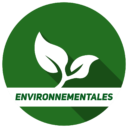In a world increasingly prone to plastic pollution, it is natural to seek appropriate solutions to slow down this global phenomenon. The recovery of plastic waste is one of the most effective solutions to fight against environmental pollution.
The recovery or revalorization of waste is a set of processes by which we transform a material waste into another product, material or energy. As far as plastic waste is concerned, there are currently six stages in the collection and recovery process.
The recycling process of plastic waste starts with the collection stage. Although it is a determining factor in the process, this stage is carried out by the users of the plastic. Through the selective sorting of household waste, these users deposit plastic waste in bins or sorting containers provided for this purpose. This can be plastic bottles, plastic bags, plastic films or plastic pots and containers.
After this stage, the collected waste is then transported by trucks to a sorting center. They are sorted according to their nature: polystyrene, polyethylene, polypropylene and others. After shredding and cleaning, followed by drying and homogenization, the sixth step consists of obtaining the pellets. The homogeneous paste from the previous step is flattened to form plastic balls or large cubes, which are then cut into small grains, called pellets. In this form, the plastic is reused to make new objects.
According to a report by the Cameroonian Ministry of Environment, Nature Protection and Sustainable Development, Cameroon produces 6 million tons of waste per year; 10% of which is plastic waste, or 600,000 tons.
Despite this potential, the Cameroonian plastic waste recycling industry (consisting of about ten companies) remains weak. According to official figures, the contribution of this sector to the gross domestic product (GDP) is only about 1%. The sector also faces technical and administrative constraints, including a small market, competition from imports, and payment of additional duties and taxes.
Fanta Mabo

